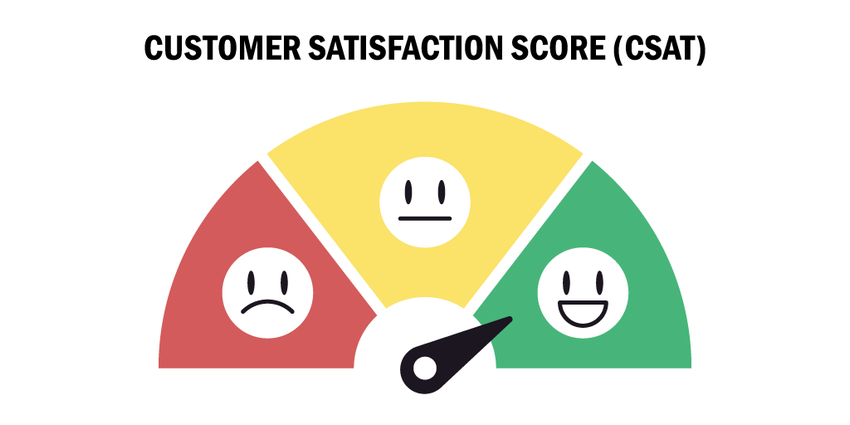Clearly, how a customer feels about a purchase is going to depend on the context. Is a customer buying food, buying a product, buying a particular experience or buying a service? There are a lot of theories of customer satisfaction but some of the most important elements appear to be the material product, the behaviour and attitude of employees, and also the environment in which the service is delivered.
Two of the most commonly accepted theories of customer satisfaction are the expectancy disconfirmation theory and the equity theory.
In the expectancy disconfirmation theory, the most crucial element appears to be the expectation of the customer. In an interesting study done at Purdue University on what determines customer satisfaction and the likelihood of a person returning to a restaurant, twenty-four attributes of the dining experience were surveyed to discover what the most important elements were to a customer’s sense of satisfaction.

source:mycustomer.com
The idea of the study was to identify which elements of the dining experience were most important in determining the likelihood that people would return to the restaurant in the future. The number one attribute is not surprising, it’s the taste of the food. But of the next three, surprisingly two relate to cleanliness. Academic papers are notoriously long and difficult to read, but an excellent summation of this study can be found here.
In the equity theory, if the customers perceive they have obtained more benefits compared to the costs they feel satisfied. In other words, this theory postulates that if customers feel as though the value they have received is worth a little bit more than the cash that they have spent, then they’ll be satisfied.

source:mycustomer.com
Let’s look at the 3 main elements of customer satisfaction.
The material product
The material product has a huge bearing on customer satisfaction. The term material product refers to the item that is being sold to the customer, or the service that the customer is receiving from a particular business. Customers are often satisfied when the material product that they receive meets or exceeds the standards that they had in mind.

source:mycustomer.com
Customers are more satisfied if a product they are buying performs its primary functions in an optimal way. If they are purchasing a gadget, they are more likely to be satisfied if that gadget works as advertised. Customers are more satisfied if a product they are purchasing has lots of features that they love. Customers are also satisfied if the product conforms to their expectations of what that product should be like. For example, if it is made of low-quality material or it is smaller in size than expected, customers might express dissatisfaction.
Customers also like it when a product shows signs of durability. They are dissatisfied if a product appears as though it could easily break apart. They also like it if a product seems serviceable because they want to know that they have the option to change it a little bit should they want to.

source:mycustomer.com
Customers also like products that are aesthetically pleasing. Apple are fantastic with this aspect of customer satisfaction, their products are always aesthetically pleasing and their packaging looks great.
The behaviour and attitude of employees
Customer satisfaction is greatly affected by the behaviour and the attitudes of the people they interact with at the place of business. That includes the receptionists, the secretary, the salesmen and in some cases, the managers.
Customers are often dissatisfied by businesses whose staff offer unreliable services. For example, in the case of a restaurant, customers may become dissatisfied with the service when waiters mess up their food and drinks orders by bringing them the wrong items. Customers in retail stores don’t like it when the staff creates mix-ups during the billing process. In online stores, customers don’t like it when businesses ship them items that don’t match the exact specifications that they were looking for.

source:getcloudapp.com
Customer satisfaction also goes down when the responsiveness of the staff is wanting. Customers in dealerships don’t like it if they have to wait too long before a sales person comes over to talk to them. Restaurant goers don’t like it when they have to wait unusually long before their food or drinks arrive at the table. Customers are more satisfied with businesses that serve them promptly, and employees who respond to their requests in the shortest possible time.
Customers are also more satisfied with whose employees are courteous. This applies to pretty much every business in the service industry. All customers like it when employees make them feel welcome, and they prefer it if the staff go out of their way to be nice to them. Customers don’t like to feel rushed into making purchase decisions. They don’t like to be addressed in a rude or an indifferent tone. In other words, customer satisfaction is diminished if customers feel that they are being taken for granted.

source:getcloudapp.com
Customers are more satisfied with businesses whose staff inspire trust. For example, customers often choose to purchase certain products without knowing exactly how they work or what their specifications are. They may ask the staff of a given business to provide them with details about a product, or even to recommend specific makes and models that may be the most suited to their needs. Customers don’t like it when the staff try to misinform them in order to make a sale, or when they try to upsell them with no genuine regard for what they want.
The environment
Customer satisfaction is greatly impacted by the environment inside and around the premises of a business. The general appearance and feel of the business premises will determine how comfortable and relaxed customers will feel during their time at the establishment, and it will have a bearing on how satisfied the customers will be.

source:qminder.com
A great example of how important the environment can be determining customer satisfaction is when a person eats in a particular restaurant. The term ambiance is used in the hospitality industry to mean the general aesthetic of an establishment, and customers attach a lot of value on ambiance when they assess the quality of their dining experiences in certain restaurants.
For most customers, the physical appearance of a given establishment will be a major part of how they perceive the quality of their experience at that establishment. Is the place clean? Does it have high-quality furniture or great wall art? Is it located in a noisy part of town? All these things matter to customers, and they will all have an impact on customer satisfaction.

source:qminder.com
The thing to remember when trying to create customer satisfaction is that although customers have different thresholds for dissatisfaction, most of the attributes for creating customer satisfaction are fairly easy to grasp, and most of them are within your control. You can improve the ability of your business to satisfy customers by improving the quality and variety of your products, training your staff to deliver better customer service, and by making sure that your business is clean and it has a great physical appearance.





